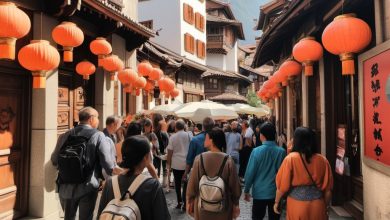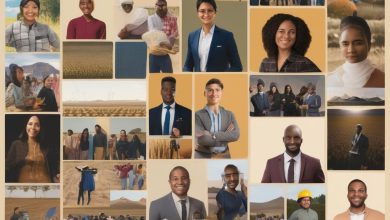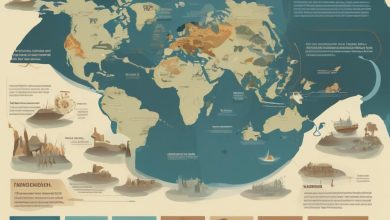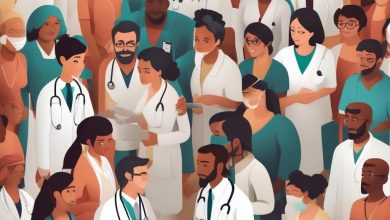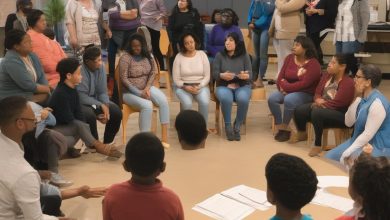Migration and Human Rights: Fair Treatment for All
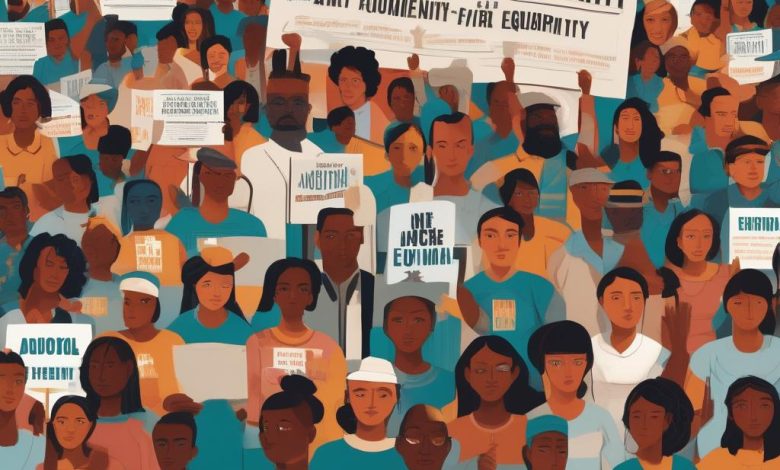
Migration and Human Rights: Fair Treatment for All
In today’s world, people moving across borders is a big issue. Many flee from danger, persecution, or to find better lives. They often meet big challenges and bias. This piece looks at how migration and human rights connect, highlighting the need for fairness for all.
Moving to a new place is complex, pushed by many reasons like economic needs or war. Refugees, asylum seekers, and economic migrants all deserve respect for their basic rights. This section aims to highlight the issues migrants face and push for global support to protect their dignity and well-being.
Key Takeaways
- Migration is a global issue that intersects with human rights concerns.
- Migrants, refugees, and asylum seekers face numerous challenges and discrimination.
- Ensuring fair treatment for all those who cross international borders is a critical imperative.
- Understanding the diverse factors driving migration is key to addressing the issue effectively.
- International laws and global policies play a crucial role in protecting the rights of migrants.
Understanding the Challenges of Migration
Migration is a complex issue with many reasons. It’s driven by economic and social factors, as well as by conflict and persecution. To understand the challenges faced by millions, we need to look at the main reasons people move.
Socio-economic Factors Driving Migration
Poverty and lack of jobs push people to leave their homes for a better life. In many countries, poor economies, limited education, and climate change make it hard for communities to survive. This leads to more people moving to richer areas within their countries or across borders.
- Poverty and lack of economic opportunities
- Environmental degradation and climate change
- Unequal distribution of resources and wealth
- Limited access to basic services, such as healthcare and education
The Impact of Conflict and Persecution
Conflict, political instability, and persecution also drive migration. Millions flee due to civil wars, ethnic and religious violence, and other violence. These people, known as refugees or asylum seekers, face big challenges in finding safety and basic rights.
- Civil wars and armed conflicts
- Ethnic and religious persecution
- Political instability and human rights abuses
- Displacement due to natural disasters and climate change-related events
Knowing why people migrate is key to solving the global migration crisis. By tackling poverty, conflict, and persecution, we can work towards a fairer world. This way, everyone’s basic rights are protected.
| Socio-economic Factors | Conflict and Persecution |
|
|
Migration and Human Rights: Ensuring Fair Treatment for All
In today’s world, protecting the rights of migrants and refugees is key. Laws and policies worldwide help keep their dignity and fight against unfair treatment. This is true for everyone, no matter where they come from or their legal status.
The UN Universal Declaration of Human Rights and other international laws say everyone deserves the same rights. This includes migrants and refugees. These laws are key to making sure no one is left out.
It’s up to governments, groups, and civil society to follow these laws. They must work together to help migrants and refugees. This means giving them access to healthcare, education, and other basic needs. They also need protection from being taken advantage of or having their rights broken.
Advocating for Migrant and Refugee Rights
NGOs and human rights activists are very important in fighting for migrant and refugee rights. They work hard to spread the word, check if laws are being followed, and make sure governments do what they should. They push for the rights of those who are most at risk.
- Amnesty International fights for stronger protections for migrants and refugees. They push for fair asylum processes and freedom from unfair detention.
- The International Rescue Committee gives aid and services to those who have been forced to leave their homes. They also push for policies that respect the dignity of these people.
- The UNHCR works with governments and groups to protect the rights of refugees and asylum seekers. This includes their right to seek safety and get basic services.
By working together and sticking to international laws, we can make a fairer world. A world where everyone’s human rights are respected, no matter their migration status.
| International Law | Key Protections for Migrants and Refugees |
| Universal Declaration of Human Rights | Guarantees the right to seek asylum and prohibits discrimination based on race, color, sex, language, religion, political or other opinion, national or social origin, property, birth, or other status. |
| International Convention on the Protection of the Rights of All Migrant Workers and Members of Their Families | Ensures the equal treatment of migrant workers and their families, including access to education, healthcare, and other basic services. |
| 1951 Refugee Convention and 1967 Protocol | Defines the term “refugee” and outlines the rights and obligations of refugees, including the principle of non-refoulement (no return to a country where they face persecution). |
“Migration is a human right. It is an expression of the human aspiration for dignity, safety, and a better future. No one leaves home unless home is the mouth of a shark.”
– Warsan Shire, poet and activist
Protecting the rights of migrants and refugees is not just right. It’s also our duty. It helps build a fair, inclusive, and just world for everyone.
Protecting the Rights of Migrants
Protecting the rights of migrants and refugees is key to international human rights law. It’s built on a strong legal framework. This framework ensures everyone gets fair treatment and access to important services, no matter their immigration status.
International Legal Frameworks
The Universal Declaration of Human Rights, passed in 1948, is at the heart of this legal system. It states that all humans are born free and equal in dignity and rights. The 1951 Refugee Convention and its 1967 Protocol also protect refugees by defining their rights and duties.
Other treaties, like the International Convention on the Protection of the Rights of All Migrant Workers and Members of Their Families, and the Convention Relating to the Status of Stateless Persons, add to the legal protection for migrants and refugees.
The Role of Civil Society Organizations
International laws are crucial, but civil society groups are key to making them work. These groups, from small local ones to big international ones, are vital. They watch over government actions, push for policy changes, and help vulnerable migrants and refugees.
- Advocacy and Awareness Campaigns: Civil society leads in raising awareness about the issues migrants and refugees face. They work to change policies that don’t respect their rights.
- Legal Assistance and Representation: Many groups offer legal help at low cost or for free. This ensures migrants and refugees get fair treatment in complex systems.
- Humanitarian Aid and Social Services: In emergencies, civil society provides crucial aid. They also offer healthcare, education, and other vital services to those in need.
Civil society groups use their knowledge, resources, and connections to help protect migrants and refugees’ rights. They are essential in the global effort to defend these rights.
Conclusion
As we wrap up this deep dive into migration and human rights, it’s clear that fairness for all in the migration process is key. We’ve looked at the big reasons people move, the effects of war and persecution, and the need to protect migrants and refugees. This protection comes from strong laws and the hard work of groups that help people.
We need to keep working together and making policies that respect everyone’s dignity and give them equal chances. By sticking to human rights, we can make a world that’s fair and kind. Migration should lead to a better life, not more struggles.
Let’s be motivated by the strength and will of those who have moved to a new place. Let’s keep fighting for their basic rights. We should make sure their voices are heard, their stories told, and their dreams come true.
FAQ
What is the definition of migration?
Migration means moving people from one place to another. This can be for a short or long time. Reasons include economic, social, or political factors.
What are the common causes of migration?
People move for many reasons. These include poverty, lack of jobs, bad environments, conflict, persecution, and natural disasters.
How do international laws and global policies protect the rights of migrants and refugees?
Laws like the Universal Declaration of Human Rights protect migrants and refugees. Policies also help ensure everyone’s rights are respected. They promote fairness and access to basic services.
What role do civil society organizations play in advocating for the rights of migrants and refugees?
Civil society groups are key in fighting for fair treatment of migrants and refugees. They push for policy changes and offer support. Their goal is to protect everyone’s rights during migration.
How can local communities support and integrate migrants and refugees?
Communities can help by giving migrants and refugees access to healthcare, education, and homes. Creating a welcoming place helps them feel part of the community.

